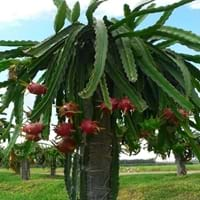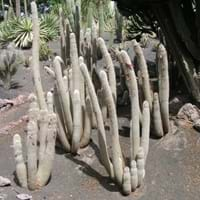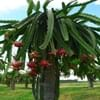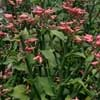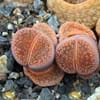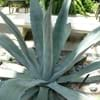Life Span
Perennial
Perennial
Type
Cactus or Succulent
Cactus
Origin
North America, Latin America and the Caribbean, Central America, South America
Central America, South America, Brazil
Types
Not Available
Not Available
Habitat
tropical environments, Tropical regions
Desert, Temperate Regions
USDA Hardiness Zone
Not Available
12-15
AHS Heat Zone
Not Available
12-10
Sunset Zone
Not Available
12, 13, 21, 22, 23, 24
Habit
Not Available
Upright/Erect
Minimum Height
Not Available
Minimum Width
Not Available
Flower Color
Not Available
Red, Orange, Salmon
Flower Color Modifier
Not Available
Not Available
Fruit Color
Red, Salmon
Not Available
Leaf Color in Spring
Not Available
Not Available
Leaf Color in Summer
Not Available
Not Available
Leaf Color in Fall
Not Available
Not Available
Leaf Color in Winter
Not Available
Not Available
Leaf Shape
Lanceolate
Succulent
Plant Season
Not Available
Spring, Summer, Fall, Winter
Sunlight
Full Sun
Full Sun
Growth Rate
Not Available
Not Available
Type of Soil
Loam, Sand
Loam, Sand
The pH of Soil
Acidic, Neutral, Alkaline
Acidic, Neutral, Alkaline
Soil Drainage
Well drained
Well drained
Bloom Time
Not Available
Spring, Summer
Tolerances
Deer resistant, Drought, Heat And Humidity, Salt, Shade areas, Wet Site
Drought
Where to Plant?
Container, Ground, Pot
Container, Ground, Pot
How to Plant?
Semi-hardwood cuttings, Stem Cutting
Seedlings, Stem Cutting
Plant Maintenance
Medium
Medium
Watering Requirements
Water slowly, and allow to dry completely between soakings
Reduce watering in winter
In Summer
Lots of watering
Lots of watering
In Spring
Moderate
Moderate
In Winter
Less Watering
Average Water
Soil pH
Acidic, Neutral, Alkaline
Acidic, Neutral, Alkaline
Soil Type
Loam, Sand
Loam, Sand
Soil Drainage Capacity
Well drained
Well drained
Sun Exposure
Full Sun
Full Sun
Pruning
Dispose of diseased portions, Remove damaged leaves, Remove dead branches, Remove dead leaves, Remove dead or diseased plant parts
No pruning needed, Remove damaged leaves, Remove dead branches, Remove dead leaves
Fertilizers
15-30-15 liquid fertilizer, Fertilzer with low nitrogen content
Fertilize the soil before planting, slow-release fertilizers
Pests and Diseases
Bacterial Stem Rot, Birds, Brown Rot
Bacterial Stem Rot, fungus, Mealybugs, Spider mites
Plant Tolerance
Deer resistant, Drought, Heat And Humidity, Salt, Shade areas, Wet Site
Drought
Flower Petal Number
Not Available
Single
Showy Fruit
Not Available
Yes
Edible Fruit
Not Available
No
Foliage Texture
Bold
Bold
Foliage Sheen
Not Available
Not Available
Attracts
Not Available, pollinators
Hummingbirds
Allergy
Not Available
Not Available
Aesthetic Uses
Showy Purposes
Landscape Designing, Showy Purposes, Wild gardens
Beauty Benefits
Anti-ageing, Good for skin, Making cosmetics
Not Available
Environmental Uses
Food for animals
Air purification
Medicinal Uses
anti-cancer, anti-inflammatory, Antitumor, Diabetes, Healing, Nutritive, Skin wounds
No Medicinal Use
Part of Plant Used
Flowers, Fruits, Seeds
Whole plant
Other Uses
Cosmetics, Food for animals, Used as a nutritious food item, Used for its medicinal properties
Florist trade and landscaping, Used as Ornamental plant
Used As Indoor Plant
Yes
No
Used As Outdoor Plant
Yes
Yes
Garden Design
Container, Houseplant, Rock Garden, Wall
Container, Houseplant, Rock Garden, Wall
Botanical Name
Hylocereus undatus
Cleistocactus strausii
Common Name
Pitahaya, Dragon Fruit
silver torch or wooly torch
In Hindi
hylocereus
Cleistocactus strausii
In German
hylocereus
Cleistocactus strausii
In French
hylocereus
Cleistocactus strausii
In Spanish
hylocereus
Cleistocactus strausii
In Greek
hylocereus
cleistocactus strausii
In Portuguese
hylocereus
Cleistocactus strausii
In Polish
Hylocereus
cleistocastus strausii
In Latin
Hylocereus
Cleistocactus strausii
Phylum
Magnoliophyta
Magnoliophyta
Class
Magnoliopsida
Magnoliopsida
Order
Caryophyllales
Caryophyllales
Family
Cactaceae
Cactaceae
Genus
Hylocereus
Cleistocactus
Clade
Angiosperms, Core eudicots, Eudicots
Angiosperms, Core eudicots, Eudicots
Tribe
Hylocereeae
Trichocereeae
Subfamily
Cactoideae
Cactoideae
Number of Species
Not Available
Season and Care of Hylocereus and Cleistocactus Strausii
Season and care of Hylocereus and Cleistocactus Strausii is important to know. While considering everything about Hylocereus and Cleistocactus Strausii Care, growing season is an essential factor. Hylocereus season is Not Available and Cleistocactus Strausii season is Not Available. The type of soil for Hylocereus is Loam, Sand and for Cleistocactus Strausii is Loam, Sand while the PH of soil for Hylocereus is Acidic, Neutral, Alkaline and for Cleistocactus Strausii is Acidic, Neutral, Alkaline.
Hylocereus and Cleistocactus Strausii Physical Information
Hylocereus and Cleistocactus Strausii physical information is very important for comparison. Hylocereus height is Not Available and width Not Available whereas Cleistocactus Strausii height is 60.00 cm and width 30.00 cm. The color specification of Hylocereus and Cleistocactus Strausii are as follows:
Hylocereus flower color: Not Available
Hylocereus leaf color: Not Available
Cleistocactus Strausii flower color: Red, Orange and Salmon
- Cleistocactus Strausii leaf color: Not Available
Care of Hylocereus and Cleistocactus Strausii
Care of Hylocereus and Cleistocactus Strausii include pruning, fertilizers, watering etc. Hylocereus pruning is done Dispose of diseased portions, Remove damaged leaves, Remove dead branches, Remove dead leaves and Remove dead or diseased plant parts and Cleistocactus Strausii pruning is done No pruning needed, Remove damaged leaves, Remove dead branches and Remove dead leaves. In summer Hylocereus needs Lots of watering and in winter, it needs Less Watering. Whereas, in summer Cleistocactus Strausii needs Lots of watering and in winter, it needs Average Water.
